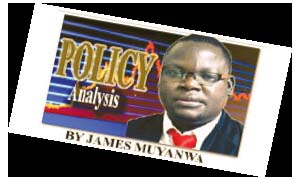•PRESIDENT Hakainde Hichilema with International Monetary Fund Managing Director, Kristalina Georgieva at State House early this year.
AS President Hakainde Hichilema was being declared a winner in the 2021 general elections, exactly two years ago today, the public debt mountain was one of the major task which laid ahead of him.
In the huge debt, President Hichilema and the yet-to-be-constituted Cabinet then faced a major challenge which was insurmountable to the government alone and needed ‘a running mate’ in a Multilateral Development Bank (MDB)
Way before the elections, though, Mr Hichilema already had talked about a clear vision on how his government would tackle the issue of debt which he acknowledged was ‘the elephant in the room’ and had to be resolved if the economy was to be restored on track.
He had already identified the International Monetary Fund (IMF) as the MDB for running mate in the restoration of the economy, which was overstrained by debt and imprudent expenditure by the previous administration.
To ensure debt sustainability, the government needed to do two things, to address the outstanding debt obligation and find operating funds, or else the country would grind to a halt economically.
For the funds, the IMF engagement would address that and for the outstanding debt obligation the government had no choice but to find a way of engaging the involved creditors, both official and otherwise.
Therefore, in my view, Zambia’s acquisition of the IMF programme was one of the biggest economic feats, if not the biggest one posted in 2022.
That was because apart from availing some resources to the government it also provides for the policy guidance to achieve greater economic development.
Above all, it has enhanced financial prudence in government dealings.
As I have indicated before, the issue of the IMF financial bailout to Zambia had been a topical one for almost a decade.
The Patriotic Front (PF) government administration, particularly under former President Edgar Lungu, vainly jostled for the programme up to the time of its exit.
Government officials, past and present, economic experts and others had on many occasions explained why the country needed the IMF programme.
Within 12 months of being in government, the new administration received the package as the IMF executive board approved the 38-month arrangement under the Extended Credit Facility (ECF).
The package involves US$1.3 billion, an amount equivalent to 100 per cent of the Zambian IMF quota.
The erstwhile ruling party, PF, failed to get the support mainly due to policy inconsistency as well as lack of transparency in debt acquisition and management.
What is even more interesting is that this programme is based on Zambia’s homegrown economic reform plan that aims at restoring macroeconomic stability and foster higher, more resilient, and more inclusive growth.
The ECF-supported programme is helping to reestablish sustainability through fiscal adjustment and debt restructuring.
After obtaining the IMF bailout package, Zambia still needed to have its debt restructured under the G20 Common Framework to restore debt sustainability, as already alluded to.
Therefore, to followers of the country’s economic developments and citizens in general, the night of June 22-23 this year will forever remain a memorable one which marked the start of a new economic epoch for Zambia.
This is also considering what was at stake, had the negotiations for the debt restructuring exercise completely been botched.
According to the later information, the agreement reached at a summit in Paris, where President Hichilema was also present, calls for Zambia’s debt to be rescheduled over more than 20 years with a three-year grace period during which only payments on interest will be required.
The move demonstrates a mutual commitment to restoring debt sustainability in line with the IMF programme targets.
According to official information, under the agreed terms, the official creditors will provide a debt treatment contingent on Zambia’s debt-carrying capacity at the end of the fund-supported
programme.
This will be assessed under the IMF and World Bank Debt Sustainability Framework for Low Income Countries and will take account of the country’s economic performance and progress in strengthening economic policymaking.
According to the government the agreed debt treatment will be adjusted if conditions improve enough to justify an upgrade from “weak” to “medium” debt carrying capacity, in which case principal reimbursements would be accelerated and interest payments increased.
This ensures that Zambia achieves debt sustainability in all cases.
Official creditors also agreed with the Government that local currency denominated debt will be excluded from any treatment.
The agreement paved the way for the approval by the IMF Executive Board of the first review of the fund-supported programme and allowed for the next tranche of IMF financing of about US$188 million to be disbursed.
This has already been done and Zambia is accessing these funds accordingly.
The deal further involves the restructuring of $6.3 billion in debt Zambia owes other governments including that of China, the largest official creditor to Zambia, with $4.1 billion owed to the Export-Import Bank of China alone.
The background is that Zambia in 2020, under the watch of the PF regime, became the first African country to default on its sovereign debt during the COVID-19 pandemic and struggled since then in protracted discussions to get the IMF deal.
The debt earmarked for restructuring includes $1.3 billion in arrears, and private sector creditors are expected to do the same on the $6.8 billion owed to them.
The IMF bailout package and the debt restructuring deal are among the biggest feats the current government administration has posted.
For comments call: 0955 431442, 0977 246099, 0964 742506 or e-mail:
jmuyanwa@gmail.com.







